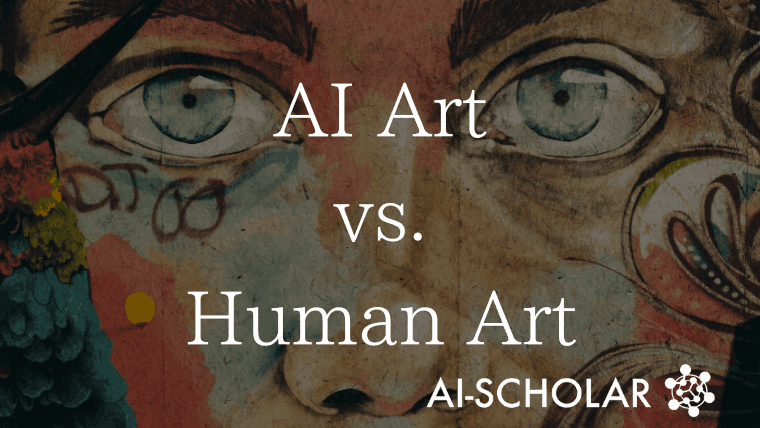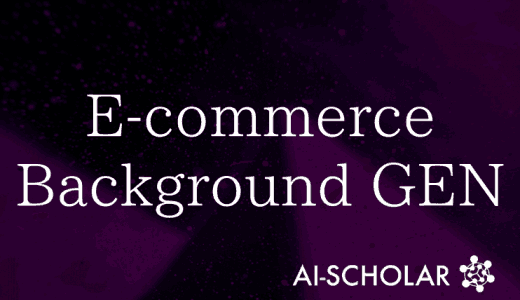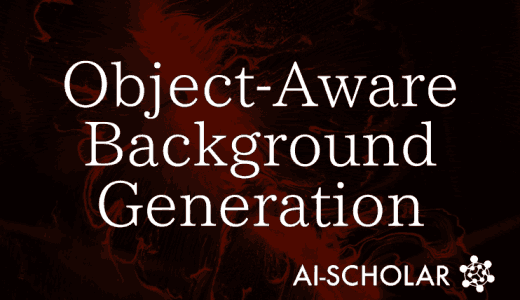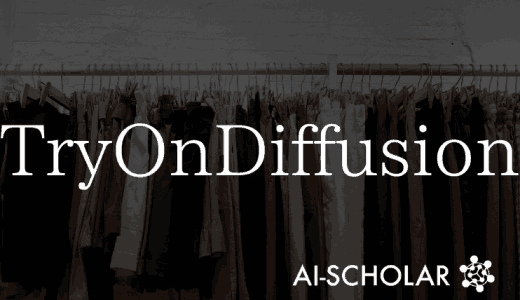
AI Art Vs Human Art -Which Do People Prefer?
3 main points
✔️ We challenged the question of how people feel about artworks created by AI
✔️ We randomly assigned either AI-created or human-created labels to artworks created using AI, and investigated how subjects' responses changed
✔️ The experiment The results showed that the human-created label was rated higher than the AI-created label in all four categories: taste, beauty, depth, and monetary value.
Humans versus AI: whether and why we prefer human-created compared to AI-created artwork
written by Lucas Bellaiche, Rohin Shahi, Martin Harry Turpin, Anya Ragnhildstveit, Shawn Sprockett, Nathaniel Barr, Alexander Christensen & Paul Seli
(Submitted on 4 Jul 2023)
Comments: Published on Springer Open.
The images used in this article are from the paper, the introductory slides, or were created based on them.
introduction
Recent advances in AI technology have made it possible to generate high-quality images of artworks. Under these circumstances, do people really prefer AI-generated art or art created by humans?
This question directly leads to the question of whether the experience of viewing art depends more on the physical properties of the artwork or on its properties as a medium for conveying human experience.
The paper presented here is about a large scale study of how humans react to AI-generated artworks using human subjects.
Findings of previous studies and objectives of this study
It is known that people's judgments of the same object can be distorted depending on the contextual information given to them. This has been confirmed for a variety of objects, such as the price of alcohol, the taste of beverages, and judgments about works of art, and several similar cases have recently been reported in the context of AI products.
For example, the same changes in judgments have been observed in the trustworthiness ratings of AI-assisted writing and in the experience of viewing AI-created artwork. They have shown that subjects tend to rate human-created artwork as more aesthetically pleasing than AI-created artwork. Similar anti-AI biases have been found across a variety of art forms, including music, dance, and poetry, as well as visual art.
On the other hand, there are some cases that report no such anti-AI bias, so the research presented here aimed to clarify the extent and causes of anti-AI bias toward AI creations through experiments using a large number of subjects.
Experiment 1
test subject
Through Amazon Mechanical Turk, 150 subjects were collected, and after screening the data, 149 subjects were selected.
Measurement Items
First, we collected 30 paintings created by AI from ArtBreeder, an art website using machine learning, and divided them into 15 figurative paintings and 15 abstract paintings, and used them as input stimuli for the subjects.
These 30 images are presented to subjects at random, and one of two labels, "human-created" or "AI-created," is randomly assigned.In this way, biases between AI-created and human-created images can be investigated.
Subjects responded to the presented image stimuli on a 5-point scale from 1 to 5, indicating how much they liked the image (liking), how aesthetic (beauty), how deep or meaningful (depth), and how much they perceived the monetary value (monetary value).
result
As shown in Fig. 2, the values for taste, beauty, depth, and monetary value were significantly higher for those labeled human-created than for those labeled AI-created (t-test). In addition, subjects rated figurative paintings more highly than abstract paintings in all four measures of painting type.

consideration
The fact that values significantly higher for those labeled human-created than for those labeled AI-created were found for all four measures (taste, beauty, depth, and monetary value) in a sample size as large as the present experiment is important.
The fact that the subjects could not notice that the image stimuli used were AI-generated, even though they were all AI-generated, shows the high quality of today's AI art.
It is also important to note that we were able to confirm that the anti-AI bias of under-estimating the value of AI art depends only on differences in the given contextual information and is a completely top-down phenomenon.
Experiment 2
The experience of viewing a work of art may integrate more than just the preferences, beauty, depth, and monetary value examined earlier. For example, according to the experimental aesthetics view of Berlyne (1960) and Berlyne (1971), art appreciation integrates evaluations of novelty, ambiguity, and complexity. Also, according to Chamberlain et al. (2018), showing a robot drawing a work of art is more appreciated by the viewer. This suggests that the effort put into the creation of the artwork and the contribution of physical movements affect the viewing experience.
In light of the above, in Experiment 2, in addition to taste, beauty, depth, and monetary value, we additionally measured the following items that can be derived from a work of art: emotion, narrative, meaning, effort expended in creation, and time spent in creation.
test subject
Using a service called Prolific, 151 subjects were collected, and after screening the data, 148 subjects were recruited.
Measurement Items
The same image stimuli as in Experiment 1 were employed, and as in Experiment 1, one of two labels, "human-created" or "AI-created," was randomly assigned and presented.
As in Experiment 1, subjects responded to the presented image stimuli on a 5-point scale from 1 to 5, indicating how much they liked (liking), found aesthetic (beauty), found profound (depth), and found financially valuable (monetary value).
In addition, respondents were asked to indicate on a 5-point scale from 1 to 5 how much emotional response (emotion), how much narrative they could imagine (narrative), how much significance (meaning), how much effort (effort), and how much time (time) they thought they spent on the project. Only the time item is open-ended.
Note: The item treated as "How much depth or meaning did you feel (depth)" in Experiment 1 was simplified to "How much depth did you feel" for the depth item to avoid duplication with the "perceived meaning" item in Experiment 2.
result
Using a statistical analysis technique called a linear mixed-effects model, we investigated how much the factors of taste, beauty, depth, and monetary value are affected by factors such as emotion, narrative, meaning, effort expended in creation, and time spent in creation.
...and preference
The results for the relationship between label and narrative are shown in the lower right corner of Fig. 3. ai-created labels had higher preference values than human-created labels, and this difference was larger the higher the narrative.
On the other hand, the results for the relationship between label and effort are shown in the lower left corner of Fig. 3. For low to moderate values of effort, the preference was greater for AI-created labels than for human-created labels, and for high values of effort, the preference was greater for human-created labels.
We also found that the values of preference increased as the values of emotion and meaning increased. Furthermore, we found that the preference for figurative paintings was greater than that for abstract paintings.
Beauty
As in the case of preference, the results of the relationship between label and narrative are shown in the upper right corner of Fig. 3. The AI-created label had higher values of beauty than the human-created one, and the difference was larger the higher the narrative was.
The results of the relationship between label and effort are shown in the upper left corner of Fig. 3. When the value of effort was low to moderate, the value of beauty was greater for the AI-created label than for the human-created label, and when the value of effort was high, the value of beauty was greater for the human-created labels were larger in the case of human-created labels.
Other results showed that the value of beauty increased as the values of emotion and meaning increased, with figurative paintings having greater values of beauty than abstract paintings.

For higher values, the value of beauty was greater for the human-created label.
Other results showed that the value of beauty increased as the values of emotion and meaning increased, with figurative paintings having greater values of beauty than abstract paintings.
Depth
We found that as subjects' perceived emotion, narrative, meaning, effort, and time all increased with the artwork, so did the value of depth.
We also found that the more positive the attitude toward AI, the greater the depth value in the AI-created case than in the human-created case (Fig. 4 left).
Monetary Value
As with depth, we found that as subjects' perceived emotion, narrative, meaning, effort, and time all increased, so did the perceived monetary value of the artwork.
We also found that those with more positive attitudes toward AI valued the monetary value of AI-created more highly than the human-created case (Fig. 4 right).

Other
We found that emotion, narrative, meaning, effort, and time values were higher when labeled human-created than when labeled AI-created.
consideration
It means that the pattern of judgment is divided into two groups: sensory-level criteria (taste and beauty) and communication-level criteria (depth and monetary value).
Judgments on a sensory-level criterion are considered to be the result of the interaction of two processes: passive evaluative processing of visual features and active engagement with the work.
summary
In this study, we investigated how the label AI-created affects the appreciation of artwork compared to the label human-created.
Although there are arguments for and against AI art, contemporary psychology believes that creativity is not an absolute attribute of objects, but the result of the interaction of subjective judgments of observers and socio-cultural factors. Therefore, it is meaningful to ask people how they feel about AI art.
All of the artworks presented to the subjects were AI-created, but all of them were rated more highly when labeled human-created than when labeled AI-created in terms of taste, beauty, depth, and monetary value.
It was also shown that this anti-AI tendency is particularly strong in judgments on depth and monetary value indicators, which convey the deeper meaning of a work of art, rather than on the sensory indicators of taste and beauty.
We also found that judgments of sensory indicators of taste and beauty were influenced by perceived narrative and degree of effort, while judgments of depth and monetary value, which convey the deeper meaning of an artwork, were influenced by personal attitudes toward the AI.
These results indicate that people tend to consider art to be a uniquely human experience.
Categories related to this article








![[OmniGen] All Image-](https://aisholar.s3.ap-northeast-1.amazonaws.com/media/September2024/omnigen-520x300.png)